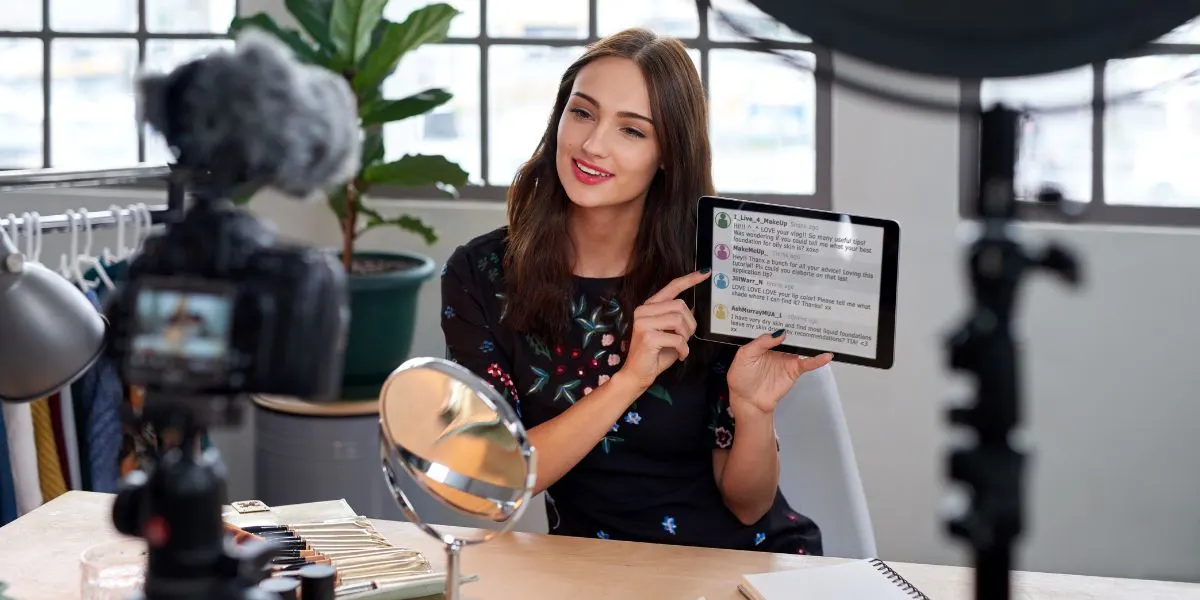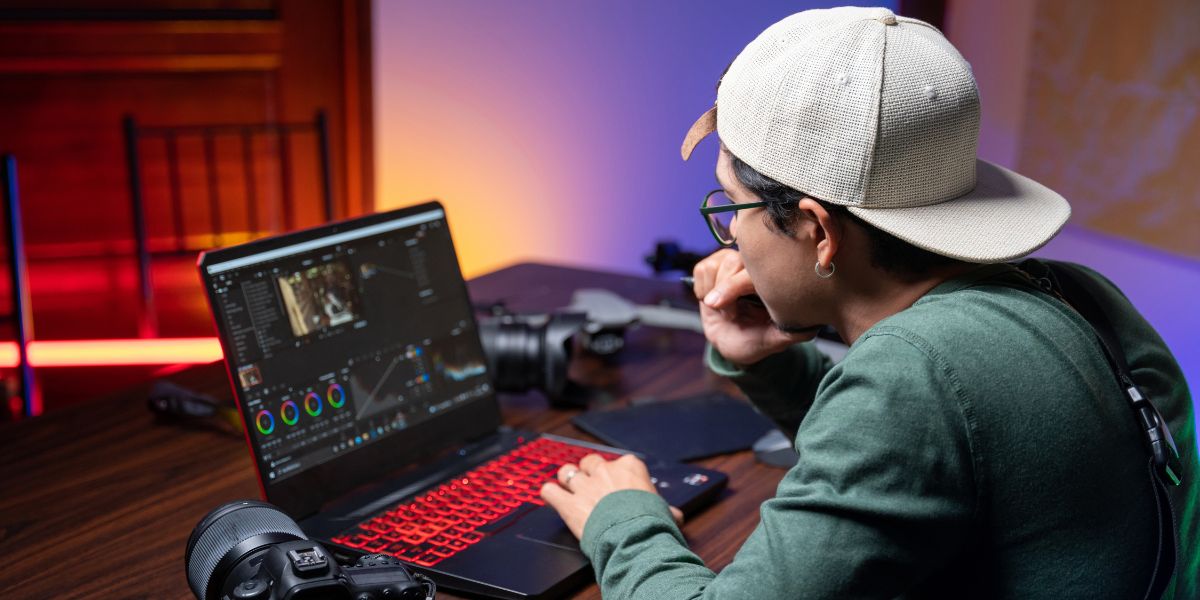Social media isn’t just for selfies and memes – it’s a powerful channel for businesses to grow. Think of social media optimization for business as the art of tuning your profiles, posts, and strategy so that platforms like Instagram, TikTok, and LinkedIn work harder for you. Instead of haphazard posting, SMO means being strategic: picking the right times to post, using the right hashtags, and engaging the right way. In this guide, you’ll learn exactly what SMO is, why it’s a must-do in 2025, and how to apply real strategies – not generic tips – to boost your brand’s social presence.
What is Social Media Optimization?
At its core, social media optimization (SMO) is making your social profiles and content easy to find and hard to ignore. It’s like SEO (search engine optimization) but for social platforms. While social media marketing (SMM) often focuses on paid ads or campaigns, SMO is about maximizing your organic reach and engagement.
That means ensuring your profile pages, posts, and even captions have the right keywords, visuals, and formatting so algorithms push them to the right audience. For example, a well-optimized Instagram profile has a clear bio with relevant keywords (think “coffee shop Brooklyn” or “B2B SaaS analytics”), a branded profile photo, and a link to your website. Each post is crafted with relevant hashtags and calls-to-action. By optimizing content this way, you grow brand awareness, build trust with followers, and ultimately drive more leads and sales – all from regular, unpaid posts.
Why SMO Matters for Business in 2025
Social media isn’t slowing down. As of 2025, nearly two-thirds of the world’s population are active social users, spending over two hours a day scrolling, tapping, and engaging. For businesses, that means a huge audience is waiting – but the space is also crowded. Without smart SMO, even great products can get lost in the feed.
Audience Reach: Platforms reward engaging, well-crafted content. A strategic post can go viral, reaching people beyond your followers. This boosts visibility for any business – whether it’s an online retailer or a local service. Brand Trust: Consumers expect brands to have an active, polished social presence. In fact, 83% of businesses say social media increases brand visibility. Consistent, high-quality content – from answering comments promptly to sharing genuine stories – builds trust. In 2025, authenticity wins: audiences crave real voices, not corporate scripts. Competitive Edge: Many companies still don’t fully optimize their social. By being smart about SMO, you can outshine competitors. For example, while others post sporadically, you could be posting at peak engagement times or using niche hashtags that target your ideal customer. Evolving Trends: Algorithms and features change fast. Short-form videos (TikTok, Reels), live shopping, AI-driven search, and private community groups are all hot. SMO keeps you ahead. If you’re not adapting – say, by creating snackable video content or optimizing for social search – you’ll miss out on new ways to connect.
In short, SMO turns social media from a cost-center into a growth engine. In 2025 and beyond, investing in these smart strategies means higher reach, stronger customer relationships, and a clearer path to growth.
Core SMO Strategies and Techniques
Optimizing social media isn’t one-size-fits-all. Let’s break down the most important tactics:
Profile and Content Optimization
Complete, Consistent Profiles: Make sure every social profile (Facebook Page, LinkedIn Company, Instagram, etc.) is 100% filled out. Use the same brand name and handle where possible. Upload a clear logo or friendly photo. Write a bio that speaks to your audience, not just company jargon – and include keywords (like your industry or location) so users can find you by search. Branded Visuals: Use high-quality images for banners and posts. Tools like Canva can help non-designers create polished graphics. A visually appealing profile signals professionalism and attracts clicks. Featured Links and CTAs: Most platforms allow one or two key links. Use them wisely – link to your homepage, a current promotion, or a signup page. On Instagram and Facebook, add action buttons (like “Call Now” or “Shop”) to make it easy for prospects to act. Keyword-Rich Descriptions: Just like Google, many social platforms have internal search. People might search “best bakery near me” on Instagram or TikTok. Include important keywords in your profile description and even in captions (“#BakeryDallas” or “JuiceBarLA”). This helps searchers and algorithms match you with relevant queries.
Content Strategy & Timing
Content Calendar: Plan your posts. It may sound basic, but consistency is key. Create a content calendar to map out what to post and when. For example, you might share a product tip every Tuesday and a customer story on Friday. Planning ahead ensures variety and saves last-minute scrambling. Post Timing: Use analytics (even the free ones) to find when your audience is most active. Often, lunch hours and evenings on weekdays or mid-morning weekends work well, but every audience is different. Some tools like Hootsuite or Buffer suggest optimal times based on past performance. Posting when your followers are online maximizes immediate engagement, which tells the algorithm to show your post to even more people. Evergreen vs. Real-Time: Balance timeless content (how-to guides, brand stories) with timely posts (news, trending memes, event tie-ins). Evergreen posts keep flowing in views over time, while real-time content (e.g. commenting on a viral news story) can spike engagement and gain new followers who see you as current. Repurpose Content: Don’t reinvent the wheel. A blog post can be turned into an infographic or a short video. Take a TikTok you made and also share it on Instagram Reels. This maximizes the value of each piece of content and meets different audience preferences without extra work.
Hashtag Strategy
Mix of Hashtags: Use a combination of broad, niche, and branded hashtags. Broad tags (#marketing) get huge audiences but lots of competition. Niche tags (#LocalSEO) have fewer posts but a more targeted audience. Always include at least one or two brand-specific tags (your product name, campaign name) to encourage community posts and make your own content easily searchable. Trending Tags: Keep an eye on trending hashtags (especially on Twitter/X and TikTok). If a relevant trend or holiday is happening (#EarthDay, #ThrowbackThursday, #BlackFriday), join in with your own spin. This can boost visibility, but be authentic. Only jump on trends that fit your brand voice or story. Hashtag Tools: There are tools (e.g. Ritetag, Meta’s suggested tags) that show hashtag popularity. They help you find hashtags that aren’t so oversaturated that your post gets buried. Check which tags your competitors or influencers in your space use. Location Hashtags: For local businesses, always include location tags (#SeattleCoffee, #NYCBakery). Many users search by location. On platforms like Instagram, adding city or neighborhood hashtags can put your content on regional radar and attract local customers.
Platform-Specific Tactics
Each social network has its own quirks. Tailoring content to the platform is a powerful SMO tactic:
Instagram: Prioritize eye-catching visuals and stories. Use all features: static posts, carousels, Reels, IGTV. Geotags and tags on people or brands can increase discoverability. Link your latest blog or product via the “link in bio” and mention it in captions. Encourage user-generated content by reposting customer photos (with permission). For e-commerce, tag products in posts. TikTok: Short, entertaining videos are king. Leverage trending sounds or challenges related to your niche. For example, a bakery might do a “baking hack” tutorial. Authenticity matters – behind-the-scenes clips or fun team moments can go further than polished ads. Use TikTok’s analytics to see which videos get most views and do more of those. LinkedIn: This is the professional hub, great for B2B or thought leadership. Optimize your company page with industry keywords. Post articles, case studies, and insightful short posts. Encourage employees to share company content (employee advocacy). Join or start LinkedIn groups around your industry topic and add value, not just self-promotion. Tag influencers or companies thoughtfully to increase reach. Twitter/X: Be conversational. Use this platform for news, updates, and customer service. Timely engagement (replying to mentions, joining trending conversations) is rewarded here. Polls and threads (series of connected tweets) can boost visibility. Hashtags matter a lot on Twitter – usually 1-2 targeted ones per tweet is best. Facebook: Make use of business pages and community groups. Share a mix of content – videos, images, and long-form posts. Host live Q&A sessions or webinars through Facebook Live. Create or contribute to Facebook Groups relevant to your niche; people often ask for recommendations there. Pin important posts (like announcements or best offers) at the top of your page. Pinterest/YouTube: If you’re in a visual or DIY space, optimize for Pinterest by pinning pinnable images and writing keyword-rich descriptions. For YouTube, do proper keyword research for titles, descriptions and tags, and engage viewers in comments. Emerging Platforms: Keep an eye on up-and-coming networks (like Threads or Clubhouse has been in the past). You don’t have to be everywhere, but if your audience is migrating to a new app, it can pay off to establish a presence early.
Engagement and Community Building
Optimization isn’t just about algorithms – it’s also about people. The more genuine interactions you have, the better your posts will perform:
Prompt Responses: Aim to reply to comments and direct messages quickly, ideally within 24 hours. 73% of social users say if a brand doesn’t respond, they’ll consider a competitor. Even a simple “Thanks!” or helpful answer keeps people engaged and shows your page is alive. Ask Questions & Polls: Encourage interaction by asking for opinions. Polls on Instagram Stories or Twitter can boost engagement. For example, a SaaS company might ask, “Which feature would you like next?” – the answers both drive engagement and give valuable product feedback. User-Generated Content: Feature your customers. A creative way is to run a contest or challenge where customers post photos with a branded hashtag. Re-sharing customer content (with credit) builds trust – prospects see real people loving your product. Influencer and Partner Collabs: Team up with influencers or complementary brands. This isn’t just for B2C – even B2B brands can partner. For instance, a marketing SaaS could host a LinkedIn live webinar with an industry thought leader. Their audience then finds you. Value-Add Interactions: Go beyond “sales speak.” Provide tips, behind-the-scenes glimpses, or industry insights. Brands that entertain or educate keep followers coming back. Over time, this consistency signals platforms that your account is valuable, improving your organic reach.
SMO Tools and Analytics
You don’t need to guess whether your SMO efforts are working – the right tools make tracking and optimizing easy:
Scheduling Tools: Platforms like Buffer, Hootsuite, Later, or SocialBee let you plan and automate posts across channels. This helps you maintain a consistent posting rhythm. They often suggest optimal times based on your past engagement data, which guides your timing strategy. Analytics Tools: Use both native analytics and specialized tools. Facebook Insights, Instagram Insights, LinkedIn Analytics, and Twitter Analytics all give data on who sees and interacts with your posts. Google Analytics (via UTM tags) shows how social traffic behaves on your website. For deeper dives, consider tools like Sprout Social, Brandwatch, or AgoraPulse – they consolidate social stats and even listen for brand mentions online. Content Creation Tools: To keep visuals sharp and on-brand, use Canva, Adobe Express, or similar. These often have templates sized for each platform. They help even non-designers produce professional-looking images, infographics, or videos (great for SMO because striking visuals get more engagement). Hashtag and Topic Tools: To find trending tags or topics, try tools like Hashtagify or the free Twitter Trends page. Google Trends is useful for content ideas – if “AI marketing” is spiking, maybe it’s a cue to create social content around that topic. Key Metrics to Track: Focus on engagement rate (likes/comments per follower), reach/impressions, and click-throughs (if linking). Also track follower growth and conversion events (newsletter signups, sales) that came from social. Over time, analyze which post types (videos vs. images), times, and topics consistently perform best – then do more of those. A/B Testing: Try small experiments. For example, post the same content with two different headlines or images on separate days and compare which gets more clicks. SMO is iterative: use analytics to constantly refine what you do.
Real-World SMO Examples
Theory is great, but let’s bring it home with a couple of examples:
E-Commerce Brand (Beauty Products): A cosmetics company needed more visibility on Instagram and TikTok. They started optimizing posts by repurposing video content for each platform. On TikTok, they used trending soundtracks and hashtags like #BeautyHacks, while on Instagram they posted the same tutorials as Reels and in their Stories. They also worked an influencer giveaway into their strategy: followers had to follow their profile, tag friends, and use the brand hashtag to enter. The result? Their Instagram engagement doubled and TikTok followers grew by 50% in a quarter, leading to a noticeable sales bump via promo codes shared on those channels.
Local Service (Restaurant): A neighborhood café optimized its Facebook and Instagram by location and consistency. They updated their profile to include the neighborhood name and posted daily “specials of the day” at prime lunch hours. Each post used local hashtags (#PhiladelphiaFoodies, #CoffeeShopPhilly). They also engaged customers with polls (e.g. “New latte flavor: yes or no?”). Within months, more locals started checking in on Facebook and tagging the restaurant on Instagram. This organic buzz made them more prominent in local searches and led to a steady uptick in foot traffic.
B2B/SaaS Company: A software startup leveraged LinkedIn optimization and thought leadership. The CEO optimized her personal profile with industry keywords and posted articles weekly about trends in their field. The company page shared customer success stories and behind-the-scenes R&D updates. They used targeted hashtags (#B2BTech, #Analytics) and joined relevant LinkedIn groups. By engaging directly with comments and messages, they turned LinkedIn into a lead funnel – queries via DM led to demo requests, increasing their sales pipeline by over 20% in six months.
Case Study (Adapted): One beauty brand (unnamed) made waves by tailoring video content for each network. On LinkedIn, they highlighted company milestones and team stories. On YouTube and TikTok, they focused on tutorials and behind-the-scenes fun. They noted that their LinkedIn followers appreciated the professional updates, while their TikTok and Instagram audiences loved quick, creative clips. The key was optimizing for each audience rather than one-size-posting. The outcome was a unified brand story: everyone knew the company, but each platform told it in the way that audience preferred.
These examples show that SMO isn’t abstract – it’s about concrete steps like using the right tags, posting at key times, and talking with your audience.
Key Takeaways & Summary
SMO = Growth Engine: Treat your social profiles like assets that need tuning. Regularly update them with clear branding, keywords, and calls-to-action.
Quality + Consistency: Posting high-value content on a regular schedule (think visually appealing and relevant) beats random posts. Use an editorial calendar and schedule tools.
Know Your Platforms: Customize content for each network’s style and audience. Use Instagram for visuals and stories, TikTok for fun videos, LinkedIn for professional content, etc.
Hashtags & Keywords: Research and use the right hashtags and phrases so people (and the algorithms) can find you. Mix broad and niche tags, and always local ones if you’re targeting a region.
Engage, Don’t Broadcast: Social media is social – reply to comments, ask questions, and encourage user content. Prompt engagement not only builds community but also boosts your posts in the feed.
Measure & Iterate: Use analytics (even built-in ones) to track what’s working. Tweak your strategy based on data – double down on formats and topics that perform.
SMO Strategy
Profile Optimization
Content Timing & Planning
Hashtag & Keyword Use
Platform-Specific Tactics
Audience Engagement
Tools & Analytics
Conclusion and Next Steps
SMO is an ongoing journey, not a set-it-and-forget-it task. As social networks evolve, your strategy should, too. Start by auditing your profiles: is your logo up-to-date? Does your bio clearly say what you do? Next, sketch a simple content plan for the week. Try posting at a specific time and see the engagement. Use one new hashtag, or reply to every comment tomorrow. These small steps add up.
Now it’s your turn: Begin optimizing today. Maybe update your profile now with some keywords, or schedule a post for your peak hour. Watch what happens and iterate. If you’ve found this guide useful, subscribe for more insights on digital marketing, or drop a comment sharing your SMO win. Got questions or need help? Get in touch or book a consultation – let’s make 2025 your best year yet on social media!



